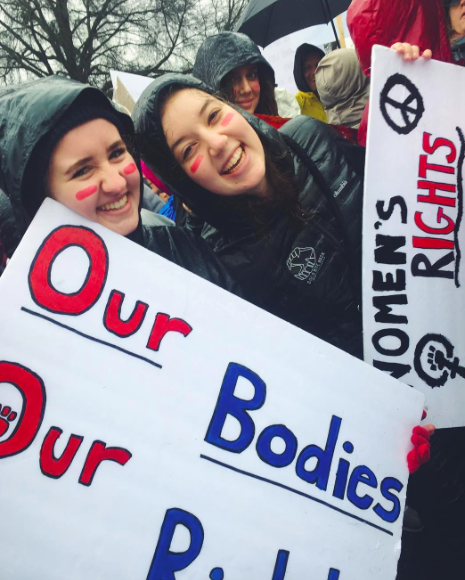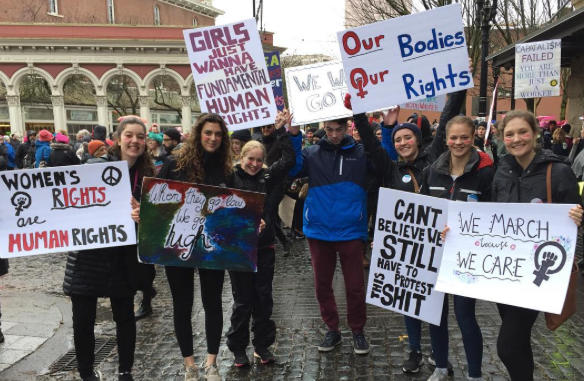The Womens March
September 5, 2018
I’ve taken a lot of history classes, and consequently, read a lot of history textbooks. For as long as I’ve been reading these books, my favorite part by far has always been learning about movements and revolutions among the people. The American Revolution, Civil Rights Movement, Anti-War Movement, The Environmental Movement, the list goes on and on. The images that came along with them are equally intriguing to me, whether they be paintings or photographs, they’re always candid and picturesque. I don’t why, but I never really imagined that I’d be able to participate in a movement like that. Maybe it was because I hadn’t experienced any kind of extreme social or political turmoil, but this year, that all changed.
On Saturday, January 21st, at least 3.3 Million People participated in the women’s march across the U.S. The march took place in reaction to the election of our new President, Donald Trump. There were marches in every major city, along with small rural towns and communities everywhere. In Portland, 100,000 people marched along the Portland riverfront. The masses of people stretched as far as the eye can see. Thousands of homemade signs cried out in outrage and shouted out in support for one another. It was pouring down rain and people were cramped together, hardly moving at times. Chants echoed amongst the crowd, instruments played faintly in the distance, babies cried, it was chaos. I stood in the crowd, my friends by my side and my voice hoarse. I was soaking wet and freezing, but I felt like I was part of history.
As I stood there amongst people who all were passionate for change, I started to think about why I was there and remembered my first encounters with feminism. I’d grown up in a household where calling yourself a feminist was as simple as wanting pancakes for breakfast, it was common sense. For a long time, I had a specific idea of what a feminist should be, a box that was tough, and not too girly. But as I grew older I began to realize that I also fit in a lot of the boxes that were considered traditionally feminine. I really liked wearing dresses, I cried a lot, and had zero interest in football whatsoever. These things didn’t always fit into the stereotype of what a “feminist” was supposed to be like and that made me feel almost like I was betraying feminism in a way. But I realized that for me, that’s what the point of feminism was. It was saying, you can be a lawyer, you can be a doctor, you can play football, you can run the race, you can wear dresses, you can wear pants, you can have 7 kids, you can have no kids, you can be a stay at home mom, you can cure cancer, dance, work on cars, whatever it is, you can. You can do it all. You can do whatever you want as a woman, as a feminist. No restrictions, and that was why I was marching. As I thought about all of this I starting thinking about all the reasons why other
As I thought about all of this I starting thinking about all the possible reasons why other people were there. Whether it be out of anger, frustration or hope, it was valid. I felt incredibly lucky to be around those people and afterward, I felt unstoppable, like I could change the world.
It’s now March, and as that feeling begins to fade I ask myself, what happens now? We’ve had our big moment, we’ve shown our voice but how do we continue this? Obviously, a weekly march is not going to happen and wouldn’t be a proactive idea, but I think that putting ourselves out there and having our voice heard is something that the march encouraged and something that we can carry into our everyday lives as well. Just because you don’t work in D.C, or write for the New York Times doesn’t mean you are voiceless. The impact you can have on your peers in your community is a powerful and real thing that should not be underestimated. So speak up about sexism, share your experiences, and work towards shaping the world that you would be proud to have your future daughter live in.






































































































































